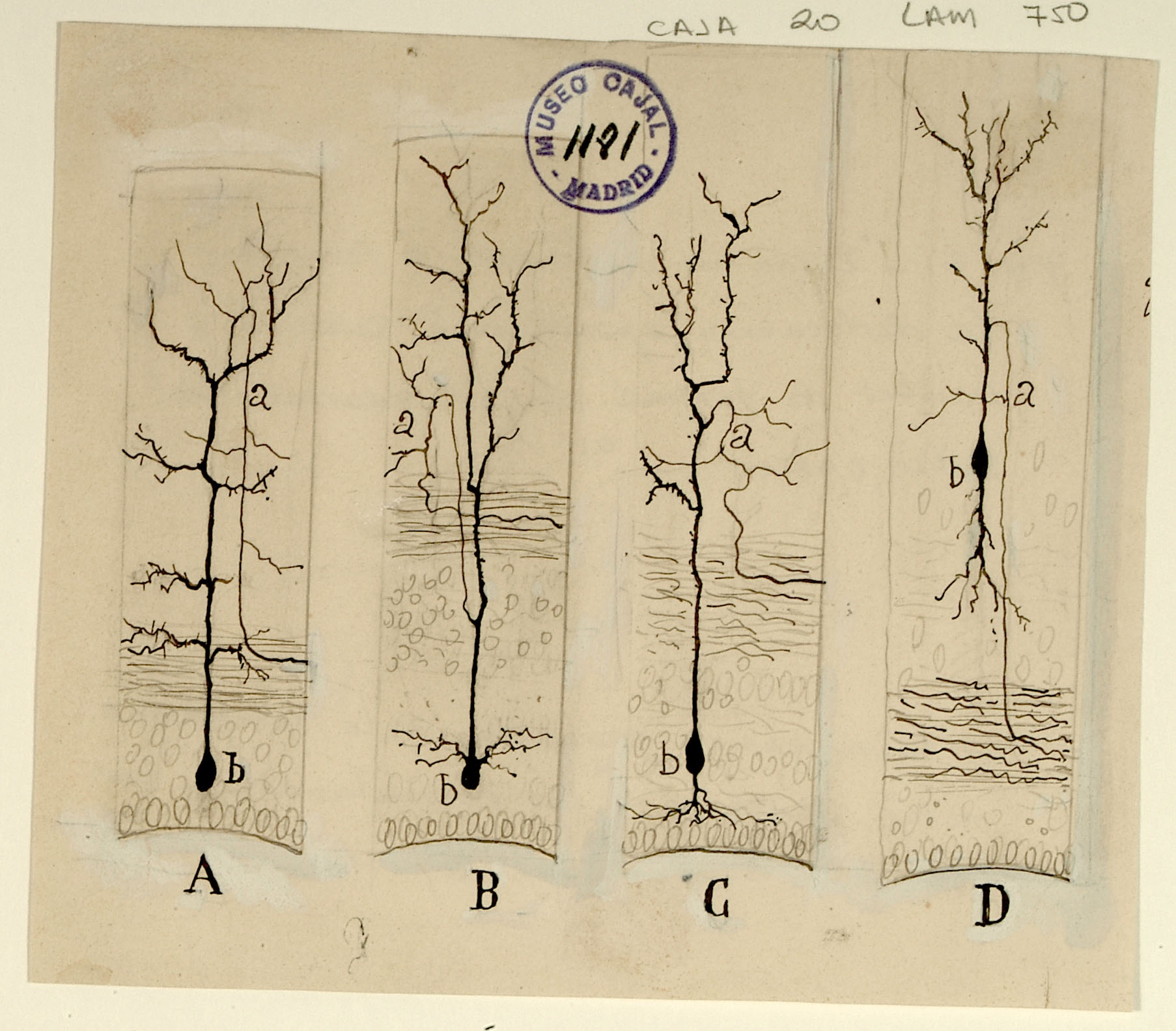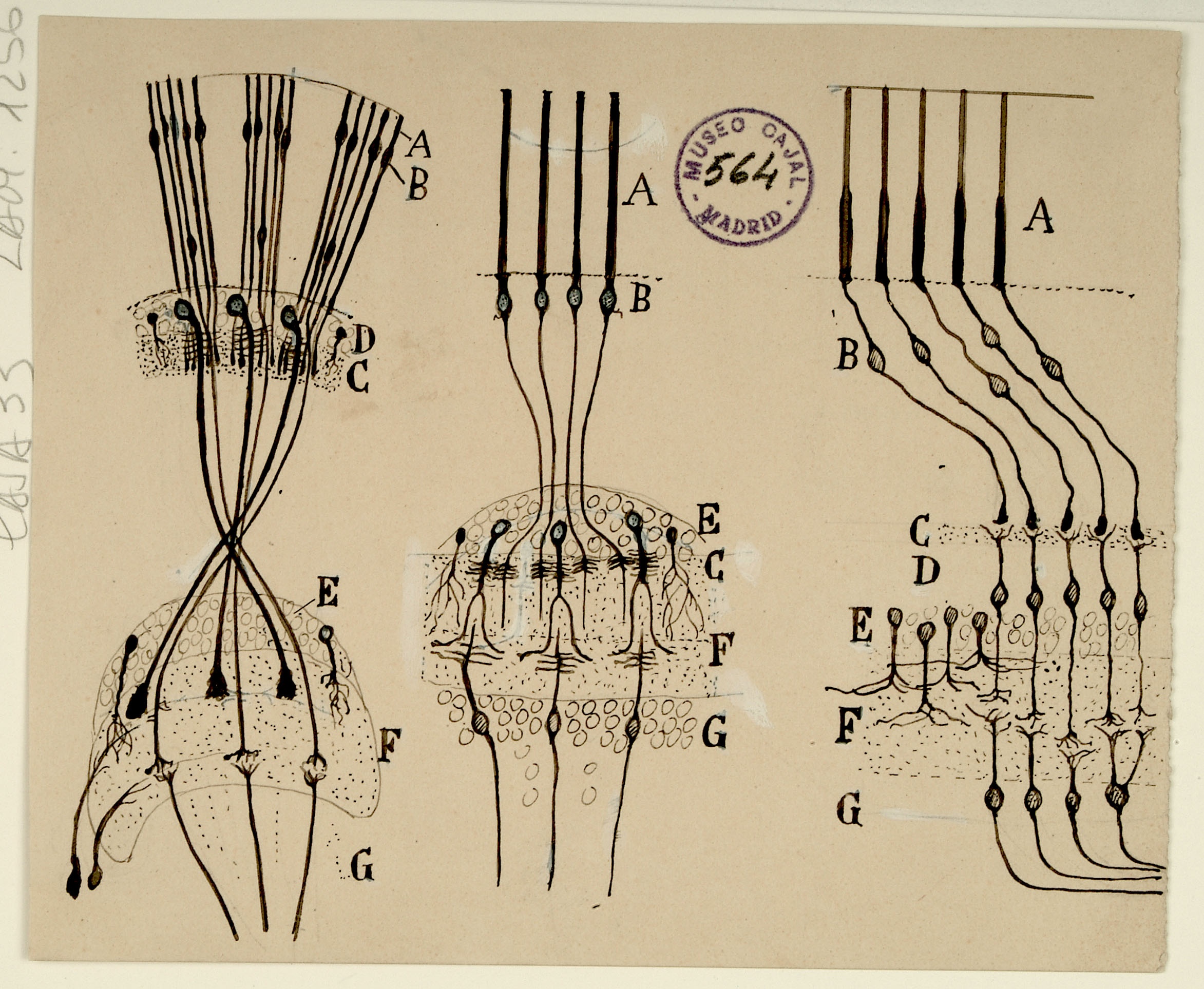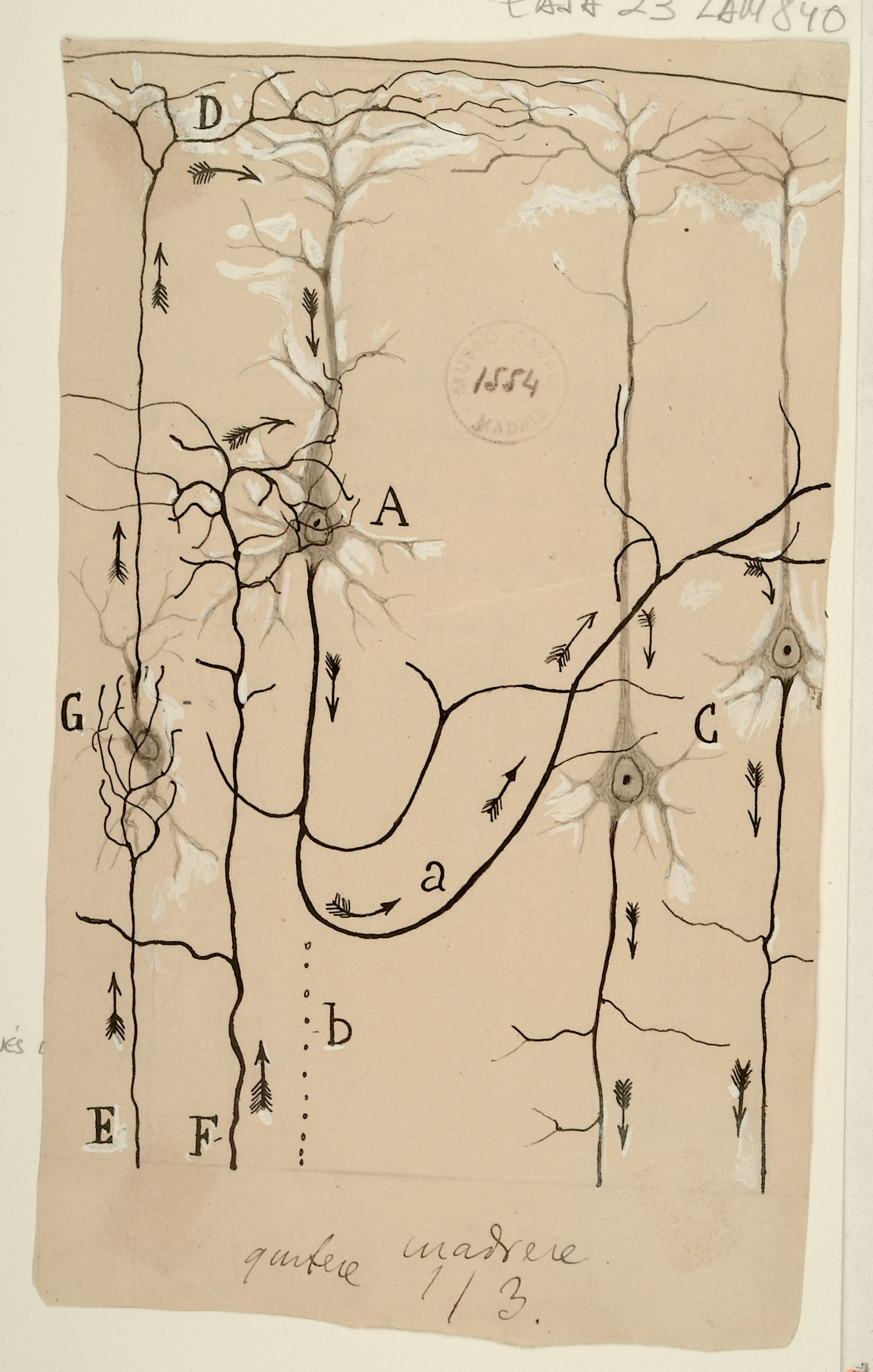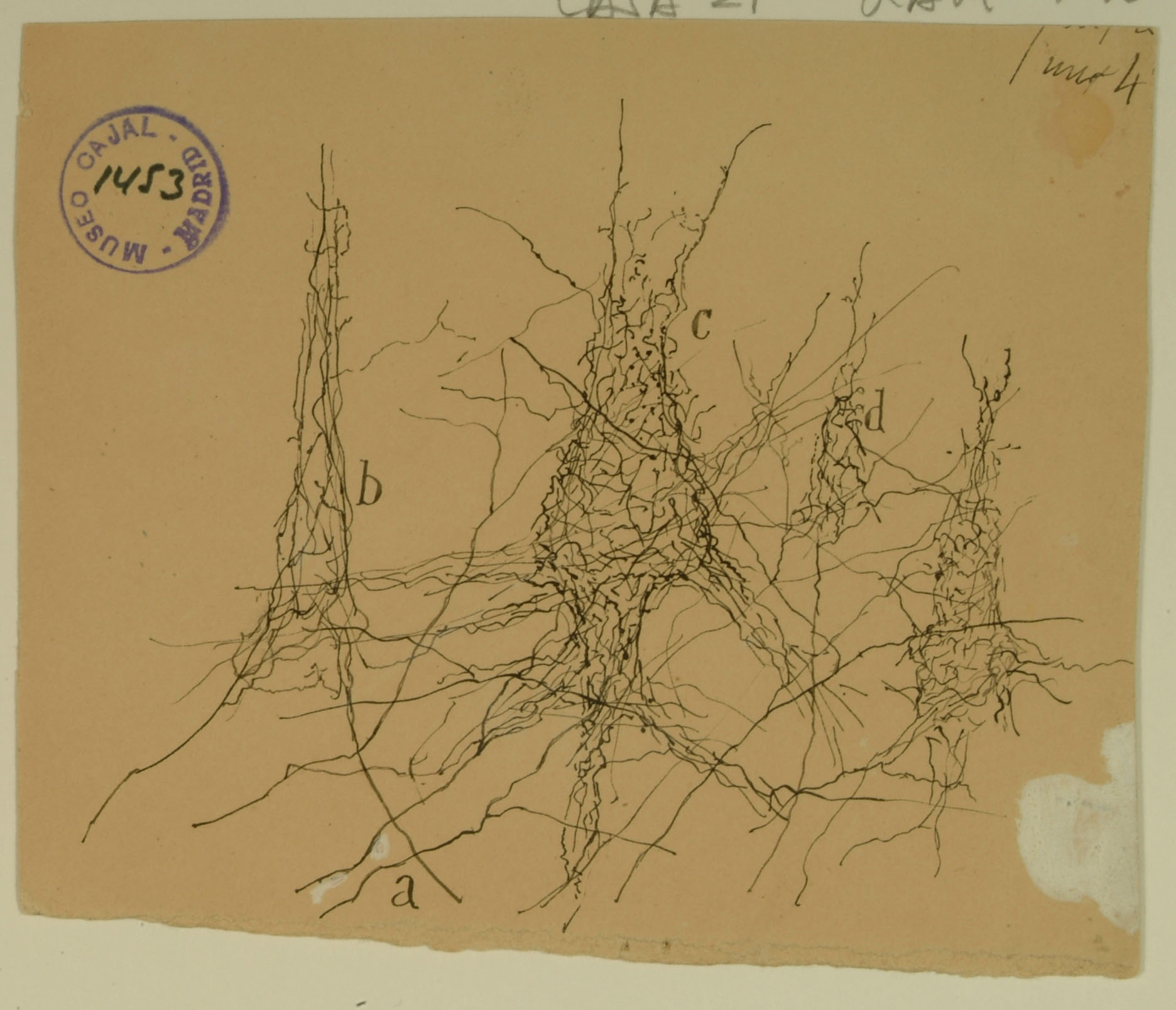...
| Div | |||||||||||||||
|---|---|---|---|---|---|---|---|---|---|---|---|---|---|---|---|
| |||||||||||||||
|
Scheme to explain the mechanism of vomiting and coughing (1904)
| Div | ||||||||||||||
|---|---|---|---|---|---|---|---|---|---|---|---|---|---|---|
| ||||||||||||||
| ||||||||||||||
| Div | ||||||||||||||
| ||||||||||||||
| Div | ||||||||||||||
| ||||||||||||||
|
Schemes intended to facilitate the comparison between retinas of insects, cephalopods and vertebrates
| Div | |||||||||||||||
|---|---|---|---|---|---|---|---|---|---|---|---|---|---|---|---|
| |||||||||||||||
|
Possible course of information flow through the pyramidal neurons in the cerebral cortex
| Div | ||||||||||||||||
|---|---|---|---|---|---|---|---|---|---|---|---|---|---|---|---|---|
| ||||||||||||||||
|
| Div | |||||
|---|---|---|---|---|---|
| |||||
|
| Div | |||||
|---|---|---|---|---|---|
| |||||
| Div | |||||
| |||||
|
6th Installation
...
Motor cortex
| Div | ||||||||||||||||
|---|---|---|---|---|---|---|---|---|---|---|---|---|---|---|---|---|
| ||||||||||||||||
|
...






